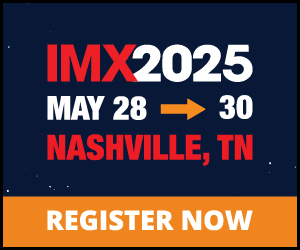Government Partnerships On The Waterways Are Focus Of IMX Session
Anyone who operates on the nation’s inland waterways knows that commerce wouldn’t flow without partnerships. Chief among them are the partnerships that exist between government agencies and private industry.
Those partnerships range from the grant programs administered by the U.S. Department of Transportation and Maritime Administration to the fuel tax that funds the Inland Waterways Trust Fund, and from state boards that develop public ports to the “shared governance” on the waterways between industry and the U.S. Coast Guard.
Fittingly, those partnerships were the subject of the first education session at the recent Inland Marine Expo in St. Louis, Mo. Mary Lamie, executive director of the St. Louis Regional Freightway, moderated the discussion, which also featured Chad Dorsey, director of the Maritime Administration’s Inland Waterways Gateway in Paducah, Ky.; Tracy Zea, vice president of government affairs for Waterways Council Inc.; Ben McCall, deputy director of America’s Central Port in Granite City, Ill.; and Capt. Scott Stoermer, commander of Coast Guard Sector Upper Mississippi River.
Dorsey discussed how MarAd continues to expand its America’s Marine Highway program and its Inland Waterways Gateway approach to waterborne commerce. Dorsey said MarAd recently expanded its Gateway offices from the first location in St. Louis now to 10 ports scattered across the West Coast, East Coast, Gulf Coast, Great Lakes region and the inland waterways. Dorsey’s own Paducah Gateway office’s area of operation includes Arkansas, Oklahoma, Tennessee, Alabama, Kentucky, Indiana, Ohio, West Virginia and Pennsylvania.
“It’s a large territory, but we’re able to reach out to our stakeholders and cover that area,” Dorsey said.
One of MarAd’s key grant programs, America’s Marine Highway, was established in 2010.
“The program supports the integration of reliable, regularly scheduled, competitive and sustainable inland marine highway services into the surface transportation system,” Dorsey said.
Other partnerships and grant and loan programs include the Small Shipyard Grant Program, the Port Infrastructure Development Program, the Port Conveyance Program and the Build America Bureau.
More information is available on MarAd’s website.
Waterways Commerce Snapshot
Zea offered a snapshot of commerce on the nation’s waterways and current points of interest in Congress. Zea started with 2017 statistics from the U.S. Army Corps of Engineers. In that year, a whopping 578.1 million tons of cargo valued at $220 billion moved on the nation’s inland waterways. The largest commodity is petroleum products at 22 percent of all cargoes.
Zea outlined two priorities for Waterways Council with regard to funding structure for waterway infrastructure. First, the organization is supporting a permanent cost share change for Inland Waterways Trust Fund (IWTF) projects from 50 percent federal treasury and 50 percent IWTF to 75 percent treasury and 25 percent Trust Fund. Zea also said he’d like to see some funding from hydro power plants on the river systems to go toward construction and major rehabilitation projects.
Ultimately, the need for funding stems from the advanced age of most of the locks and dams on the waterways.
“We’ve got 69 locks that are going to be above 80-plus years [by 2020],” Zea said. “The average age of a lock is 60 years old right now, which is concerning because a lock and dam is only made to last 50 years. After that the risk of failure increases exponentially.”
McCall then outlined the development of America’s Central Port in Granite City, Ill., on the Chain of Rocks Canal. The port is positioned on 1,200 acres and offers two Mississippi River harbors and 30 miles of rail space. The site is the former home of the U.S. Army’s Charles M. Price Support Center and was acquired through MarAd’s Port Conveyance Program.
McCall emphasized the fact that America’s Central Port, though a public port, is run like a private, for-profit port would be. It receives no tax revenues and instead operates on terminal fees and leases and reinvests profits into further port development. McCall said ongoing projects include an industrial park expansion, redevelopment of the base’s former steam plant into an optical coating manufacturing space, and the conversion of a locomotive repair shop building with the goal of attracting a local manufacturer.
Finally, Stoermer gave a brief overview of the Coast Guard’s Maritime Commerce Strategic Outlook, which offers a roadmap for waterway commerce safety and development over the next decade.
“As you know better than I, there is no doubt that what you do as a maritime industry is vital for our security, our economy and our environment,” Stoermer said. “The Maritime Transportation System is the lifeblood of our economy. It’s truly a source of national power and security, and it’s the most environmentally friendly means for transportation to meet the needs of our nation.”
In the future, Stoermer said he sees “shared governance” as the only way to meet the demands on the waterways for efficiency, safety and environmental responsibility.


